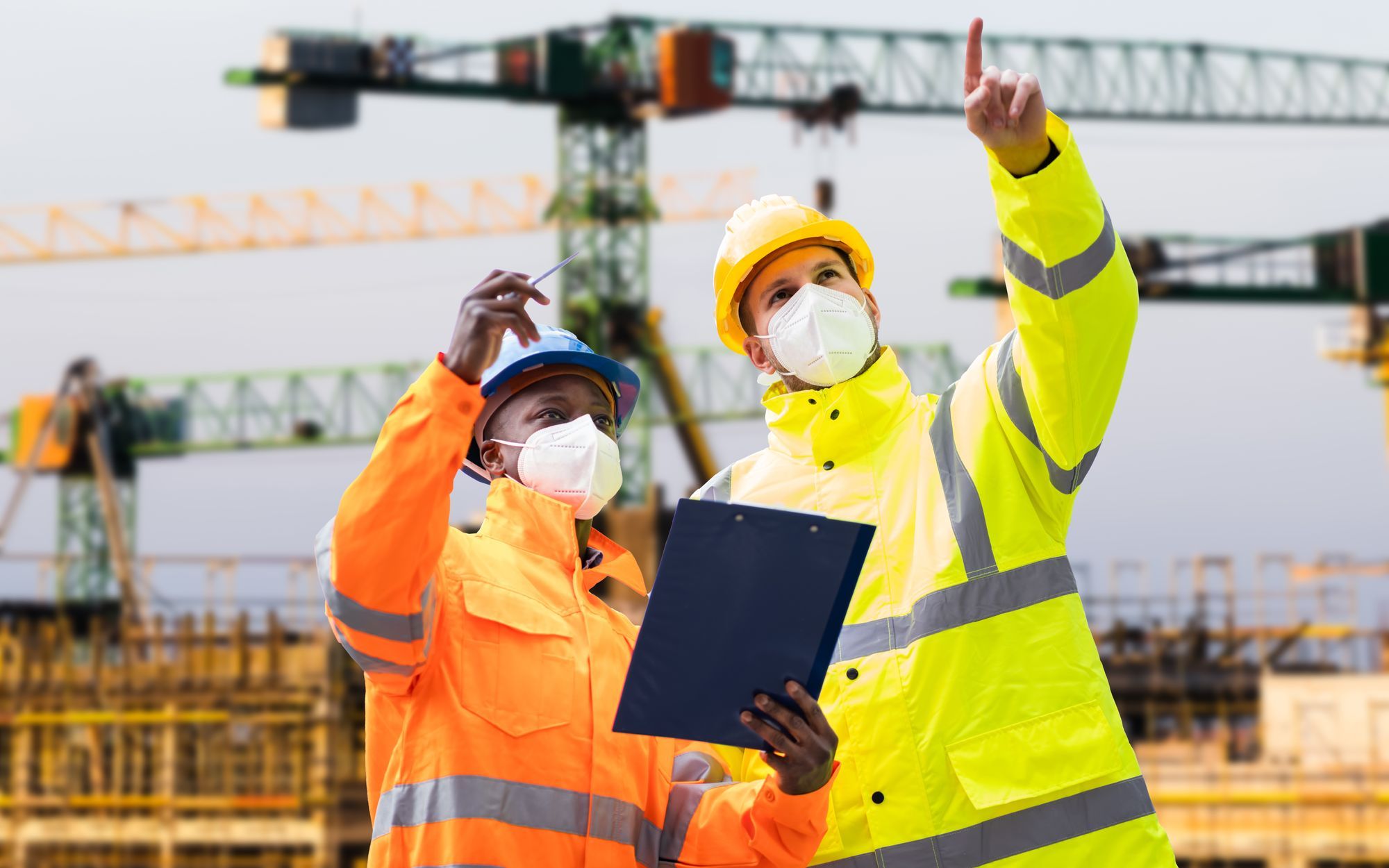There are a number of best practices that an employer may wish to follow when faced with any Occupational Safety and Health Administration inspection, including:
- determining the reason for the inspection;
- obtaining a copy of the complaint;
- designating an employee representative;
- accompanying the inspector on the visit;
- documenting the inspector’s findings;
- providing requested documents; and
- being prepared for follow-up.
But how are these best practices complicated by a global pandemic? Over the past year, COVID-19 has brought changes to construction workplaces and to OSHA’s inspection and enforcement focus. The construction industry has kept moving in the face of these challenges, but COVID-19 has and will continue to impact workplaces, and workplace procedures, into the future.
As its COVID-related Updated Interim Enforcement Response Plan and National Emphasis Program (NEP) make clear, OSHA is continuing to conduct in-person investigations during the pandemic. Inspection procedures may be slightly modified, with certain interviews and requests for documents taking place remotely or electronically, but employers should be prepared for in-person inspections related to COVID-19. The recently-issued NEP indicates that OSHA will continue to prioritize inspections of workplaces that have experienced COVID-19-related fatalities or hospitalizations. But it also develops priorities for programmatic inspections related to COVID-19, and a number of construction-related workplaces are on the list.
Given this focus, it is important for all employers to understand OSHA’s guidance related to COVID-19. As of this writing, OSHA has not yet adopted an emergency temporary standard with regard to COVID-19, but its guidance makes clear that it will use standards in the existing statute and regulations to support the issuance of citations for COVID-19 workplace deficiencies. OSHA has issued general guidance applicable to all employers, and it has also issued COVID-19-related guidance specific to construction work to supplement the general guidance.
Since the pandemic began, OSHA has consistently recommended that employers develop and implement a COVID-19 prevention program to mitigate the spread of COVID-19 in the workplace. Construction employers should ensure that they are assessing COVID-19 exposure hazards for all workers and tasks, evaluating the risk of exposure, eliminating the risk when possible, and using engineering or administrative controls where appropriate.
For example, job functions that are outdoors, in areas where workers are able to remain at least six feet apart, and with little or no contact with the public or other visitors, may be classified as low risk. On the contrary, tasks that involve entering an indoor work space, especially where workers are not able to maintain appropriate distance, may be higher risk. In such instances, it might be appropriate for employers to use physical barriers and/or plastic sheeting to separate workers.
Employers may also consider screening employees in advance of any higher-hazard work to assess potential exposures and providing training to employees to minimize the spread of COVID-19. Employers should consider providing face coverings in addition to the personal protective equipment (PPE) requirements already applicable to the construction industry.
There is one obviously unique challenge associated with the hazard COVID-19 presents in the workplace—it spreads. Given the risk of transmission, is important for employers not only to consider their employees, but visitors to the job site as well. OSHA’s construction-related COVID-19 guidance states that, to the extent possible, all visitors to a construction site should be screened in advance of arrival for signs and symptoms of COVID-19. Employers should also consider what controls must be in place for visitors to make sure risks to employees are minimized.
On construction sites, OSHA’s COVID-19 guidance, enforcement priorities and inspection procedures must also be considered in the context of the Multi-Employer Citation Policy (the Policy). Construction sites are often multi-employer sites, and OSHA will likely evaluate COVID-19 risk to workers through that lens. The Policy makes it clear that on multi-employer sites more than one employer may be citable for a violation of an OSHA standard, even if the alleged hazardous condition did not impact any employee on that employer’s payroll. The Policy designates four categories of employers in assessing their connection to the alleged hazard and the obligations each is required to undertake:
- Creating Employer. The employer that caused a hazardous condition that violates an OSHA standard.
- Exposing Employer. An employer whose own employees are exposed to the hazard.
- Correcting Employer. An employer who is engaged in a common undertaking and on the same worksite as the exposing employer and that is responsible for correcting a hazard.
- Controlling Employer. An employer who has general supervisory authority over the worksite, including the power to correct safety and health violations itself or require others to correct them.
The scope and details of the Multi-Employer Citation Policy are a topic for another article, but it is easy to see how worker protections related to COVID-19 could result in citations for employers in each of these categories. Therefore, on multi-employer construction sites it is important for employers to be conscious not only of their own efforts related to COVID-19, but also those of the other employers sharing the site. The OSHA inspector certainly will be.
Lastly, employers should continue to be reminded in general of OSHA’s whistleblower protections, and specifically with regard to COVID-19 complaints. Over the past year, whistleblower complaints have increased by about 30 %; almost 40% of those complaints were COVID-19 specific. In addition, retaliation complaints are on the rise. Both the COVID-19 NEP and OSHA’s Updated Interim Enforcement Response Plan specifically reference whistleblower protections, and inspectors will be on the lookout for employers who take action against an employee who raises concerns about COVID-19-related risks and exposures.
COVID-19 has added a significant layer of extra health and safety considerations for all employers, in addition to the ones that were already applicable to their worksites. These extra considerations impact the OSHA inspection process as well. Employers should be aware of OSHA’s expectations for protecting workers from COVID-19 risks and they should be prepared to demonstrate during an inspection the actions they have taken to meet those expectations.
Employers should remember to assess and address the risks presented by job site visitors—the OSHA inspector being one of them. Employers should follow all COVID-19-related procedures during any on-site inspection, and they should also be prepared to be flexible with regard to remote follow-up. Employers should also stay on top of any modifications OSHA may make to its policies and guidance related to COVID-19, as it has and will continue to change as the pandemic progresses.






